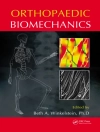This atlas comprehensively covers the use of basic ultrasound (US) scanning technologies to recognize both normal and pathologic states. It covers how to use US for soft tissue diagnosis, assessing cardiac function, pericardial effusion, tamponade, peripheral veins, gallbladder, bowel, kidneys, skull, sinuses, eye, pleura, scrotum and testes.
Atlas of Handheld Ultrasound provides detailed clinically relevant examples of how US can be used to aid diagnosis across a wide range of medical disciplines. Chapters are formatted in a clear and easy-to-follow format, with a range of interactive material to aid the reader in developing a deep understanding of how to use and interpret US correctly. It therefore provides a critical resource on how to use the modality for both specialist and non-specialist practitioners .
Tabella dei contenuti
Soft-tissue Complaints.- Shoulder.- Elbow.- Hip.- Knee.- Ankle and Foot.- Hand.- Peripheral Nerves.- Skull and Sinus.- Eye.- Neck.- Tonsils.- Thyroid.- Pleura.- Basic Breast Ultrasound.- Normal Cardiac Anatomy and Common Views.- Assessment of Cardiac Function.- Pericardial Effusion and Tamponade.- Cardiac Masses.- Common Valvular Heart Disease.- Congenital Heart Disease.- Inferior Vena Cava.- Aorta.- Peripheral Veins.- Peritoneum.- Gallbladder.- Bowel .- Kidneys.- Urinary Bladder.- Uterus.- Ovary.- Scrotum, Testes, and Paratesticular Structures .- Prostate.- Evaluation of Shortness of Breath.- Evaluation of Chest Pain .- Evaluation of Hypotension.- Evaluation of Fever.- Evaluation of Abdominal Pain.- Anuria Evaluation.- Evaluation of Leg Pain and Swelling.
Circa l’autore
Dr. Bret P. Nelson has lectured on ultrasound throughout the world, and has taught curricula in handheld ultrasound to countless medical students, residents and faculty from multiple medical specialties. He coauthored the Manual of Emergency and Critical Care Ultrasound as well as Emergency Medicine Oral Board Review Illustrated. He is Chair of the AIUM Emergency and Critical Care Community of Practice and a member of the WINFOCUS Board of Directors. He is among the national faculty for the American College of Chest Physicians’ ultrasonography course, the Difficult Airway Course, and has led a number of CME conferences on basic and advanced ultrasound.
Dr. Anjali Bhagra is an Associate Professor of Medicine at the Mayo Clinic and the chair of education within the Integrative Medicine section at Mayo Clinic Rochester. She is a board member of the Society of Ultrasound in Medical Education (SUSME). She leads the Internal Medicine Residency Ultrasound (IMRUS) program at Mayo Clinic, Rochester and is the director of the Ultrasound Mini Institute in Anatomy in Mayo Clinic School of Medicine. She lectures extensively on Point of Care Ultrasound at global and national meetings and has coauthored the First Aid to Radiology.
Dr. Sharon L. Mulvagh is Professor of Medicine, Dalhousie University, Halifax Nova Scotia and Emeritus Professor, Mayo College of Medicine. She is a clinical and investigative cardiologist recognized nationally and internationally for her research and education in heart disease in women, and noninvasive cardiovascular imaging, specifically echocardiographic imaging using newer technologies including contrast echocardiography, myocardial perfusion imaging and point of care ultrasound.
Dr. Eric Topol is the Founder and Director of the Scripps Translational Science Institute (STSI), Professor, Molecular Medicine, and Executive Vice-President of The Scripps Research Institute(TSRI). As a researcher, he has published over 1100 peer-reviewed articles, with more than 185, 000 citations, elected to the National Academy of Medicine, and is one of the top 10 most cited researchers in medicine (Thomson Reuters ISI, “Doctor of the Decade”). His principal scientific focus has been on the genomic and digital tools to individualize medicine—and the power that brings to individuals to drive the future of medicine.In 2016, Topol was awarded a $207M grant from the NIH to lead a significant part of the Precision Medicine Initiative, a prospective research program that aims to enroll 1 million participants in the US. Prior to coming to lead Scripps STSI in 2007, for which he is the principal investigator of a flagship $33M NIH grant, he led the Cleveland Clinic to become the #1 center for heart care and was the founder of a new medical school there. He has been voted as the #1 most Influential physician leader in the United States in a national poll conducted by Modern Healthcare. Besides editing several textbooks, he has published 2 bestseller books on the future of medicine: The Creative Destruction of Medicine and The Patient Will See You Now.












